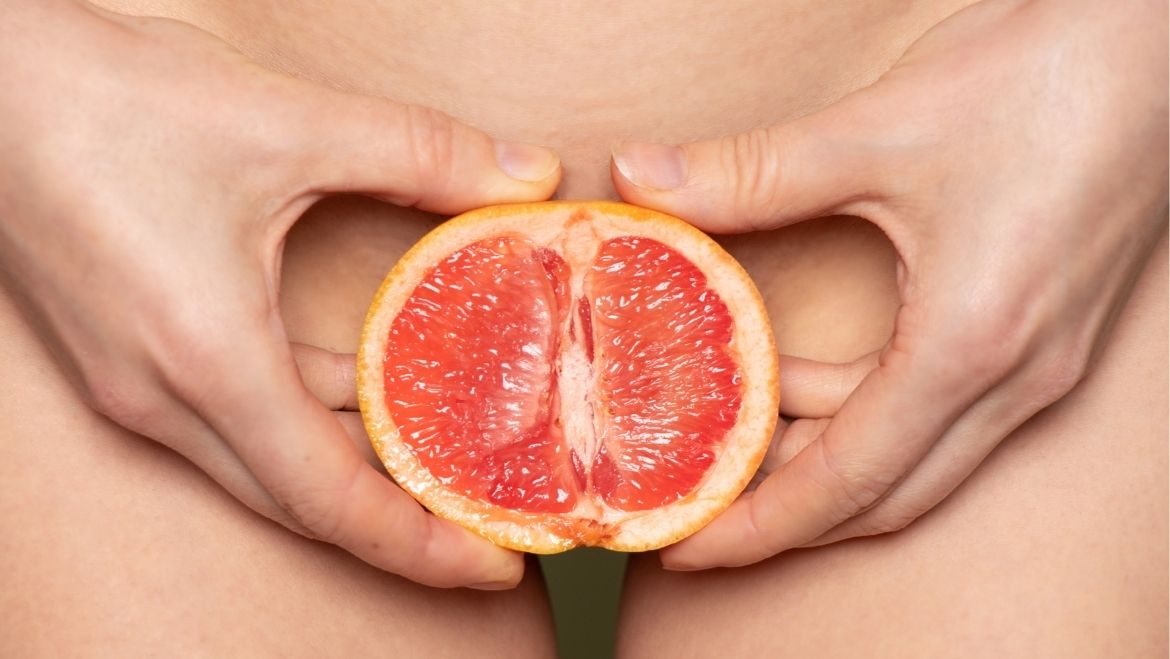The V-word: What is going on down there? Introducing Vulva and Vagina
Most people use the word “vagina” to describe the whole genital area. It’s actually just part of the package. The vulva refers to the visible regions of the genital area: mons, clitoris, urethra, labia, etc. The vagina, on the other hand, is in the inside of the body. It’s a tube-like structure connecting the vulva with the cervix. The entrance to the vagina is visible, but the rest is hidden.
Understanding the anatomy of the vulva is crucial for your and/or your partner’s enjoyment (or for general knowledge!). So, here, in a nutshell, is what’s going on “down there.”
The Clitoris
The sole aim of the clitoris is to provide sexual pleasure. The clitoris is the main location of sexual feeling for people with vulvas and has an estimated 8,000 nerve endings. Stimulating the clitoris with a finger, vibrator, penis, sex toy or a partner’s tongue can be extremely pleasurable.
The clitoris is protected from the exterior by a movable piece of protective skin called the clitoral hood, which looks like an oval-shaped pea-sized nub but is considerably larger. It’s around 3-4 inches long and forms a wishbone shape on either side of the vulva. It’s the only part of the human body dedicated completely to pleasure.
The Labia and Mons
The mons and labia majora and minora (outer and inner lips) exist to enhance sexual pleasure and to protect the vestibule (vaginal opening). The mons is the fatty skin tissue from the pubic bone to the clitoral hood. The labia majora, built from hairy and fatty tissue, extends from the mons to just below the vestibule. The labia minora doesn’t have fat, but they do have erectile tissue, so they swell with sexual stimulation.
Labia come in a wide variety of shapes and colours. Some people, for example, have prominent and plump outer labia, while others’ are much slimmer. The outer labia may cover the inner labia completely, or the inner labia may be visible in-between. Inner labia may also extend beyond their outer labia, and this is totally normal.
The Vestibule, Perineum and Anus
The vestibule is a junction between the vulva and the vagina. Technically, the vestibule is external, however, its skin is similar to what we would find in the vagina. The urethra is also located in the vestibule.
The perineum is the area between the vestibule and anus. We invite the anus to the vulva’s party as, even though it’s part of the gastrointestinal tract, it tends to be an organ enhancing sexual pleasure for many people.
The Vagina
The vagina is the tube-like structure that connects the vulva with the cervix; its length can vary significantly. The vagina tends to lubricate when it becomes sexually aroused and it can expand to double its size during arousal to facilitate penetration.
Many people enjoy having their vaginas stimulated or penetrated with a finger, a sex toy or penis. The first third of the vaginal canal is usually the most sensitive, whereas the second third tends to be less sensitive.
The cervix
The cervix is the end of the vagina and acts as a doorway to the uterus inside the body. For some people, this is also a sexually enjoyable area, while for others it may not be pleasurable to touch.
How Many Holes Are There?
There are three different holes in the genital area: the urethra, the vagina, and the anus. The urethra is the hole where urine comes out and is located between the head of the clitoris and the vaginal opening. The vagina is located a little further back, between the urethra and the anus. The anus is the hole furthest to the back.
Vulvas and vaginas in transition
There are approximately 6.579 self-declared trans respondents in Europe and 1 to 1.4 million transgender women and men in the US. Sex can be assigned at birth or changed. Gender is a sense of who we are: female, male, both or neither. Transgender individuals may face some differences when it comes to their vulvas and vaginas, especially in regard to menstrual cycles, arousal response, etc. Please check our website for more articles and workshops dedicated to this broad topic



Add Comment